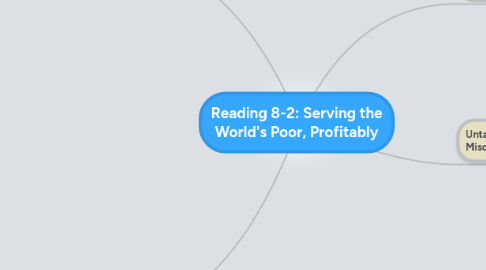
1. Three Advantages of Serving the Poor
1.1. Top-Line Growth
1.1.1. BOP markets are new source of demand and growth
1.1.2. Aggregate Demand
1.2. Reduced Costs
1.2.1. Outsourcing operations to low-cost labor markets
1.2.2. Need to be cost efficient leads to discovery of new cost saving mechanisms that can then be introduced everywhere
1.2.2.1. Provide services on a Pay-Per-Use basis
1.2.3. Business Metrics have to be revised (ROCE)
1.3. Innovation
1.3.1. Connectivity and E-Commerce
2. Strategies for Serving BOP markets
2.1. Internal
2.1.1. Business Development Task Force
2.1.2. Create Venture groups and internal investment funds for BOP entrepreneurs
2.1.3. Structural Changes
2.1.4. Business leaders must confront and rethink their preconceptions
2.1.4.1. Send young managers to BOP markets
2.2. External
2.2.1. Collaborate with other companies to spread costs and risk when building a local network
2.2.2. Reach out to external partners
2.2.2.1. Join forces with firms that are already established in BOP markets
2.2.2.2. Collaborate also with local Entrepreneurs
2.2.2.2.1. MNE needs to play advisor role for Entrepreneur in return
2.2.2.2.2. Focus particularly on female entrepreneurs
2.3. All of the above are useless as long as the external barriers are not removed
2.3.1. External barriers
2.3.1.1. Corrupt intermediaries
2.3.1.2. Inadequate connectivity
2.3.1.3. Poor infrastructure
2.3.2. Technology can be the key
2.3.2.1. Can grant access to otherwise isolated communities
2.3.2.2. Distribution and Marketing Channel
2.3.2.3. Bypass intermediaries
2.3.2.4. Lower transaction costs
2.3.2.5. Helps aggregating demand and thus buying power

